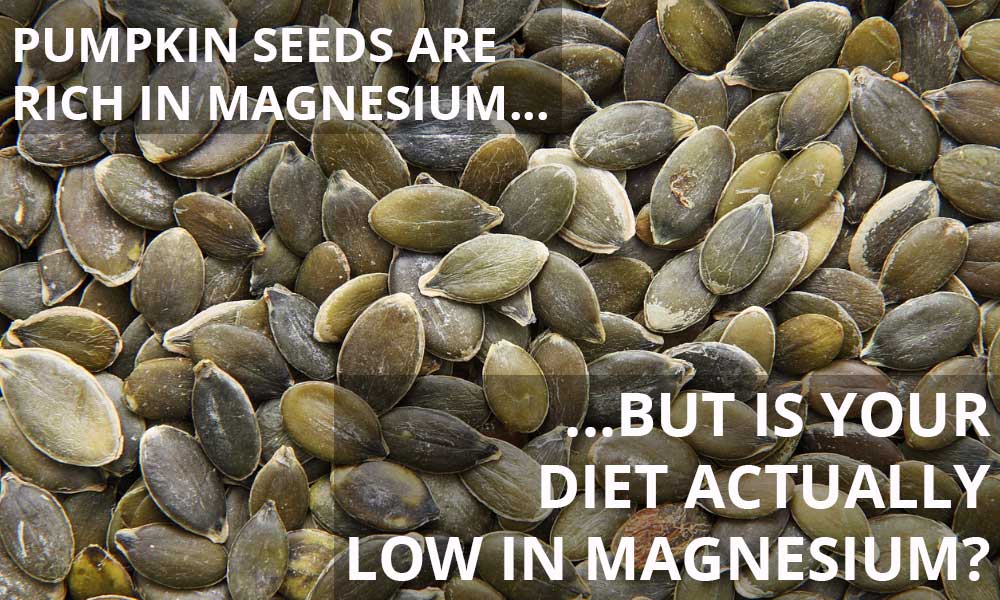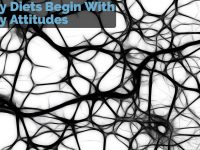You’ve heard the headlines, right? Your diet is low in magnesium! If you’re like most adults (45-85% of all men and 48-70% of all women), then you only get an estimated 352 milligrams of magnesium per day—even less (256 milligrams) if you’re a woman. Considering that the official RDAs for men and women are 400-420 and 310-320 mg/day, that means you’re getting only 80-90% of the magnesium you need daily to live a healthy life. Scary stuff.
According to the statistics above, the majority of us are in imminent risk of a subchronic magnesium inadequacy if we don’t have one already. This is the kind of low-grade deficiency that doesn’t cause any noticeable short-term effects, but could increase our risk for osteoporosis, type II diabetes, high blood pressure, cardiovascular disease, and even migraines down the road.
But you’re a health-savvy climber, which means you probably have heard this before—and you’ve taken steps to make sure it doesn’t describe you. Now, every day contains a rotation of dark chocolate, pumpkin seeds, spinach, and maybe some beans, plus whatever new superfood claims to be a great source of magnesium. Nobody is going to catch you with a magnesium-poor diet, thank you very much!
Except… the whole idea that our diet is horribly inadequate in magnesium, much less inadequate enough to cause health problems, is founded on poor science. The reality is your diet has plenty of magnesium in it, and you have virtually no risk of deficiency or inadequacy. Eating foods expressly because they’re high in magnesium won’t change your health. Let’s explore why.
(If you’re worried I won’t be convincing and you need to grab a handful of pumpkin seeds before you settle down to read, this is a good time.)
How Do We Measure Magnesium Adequacy?
How did we end up in this mess? At what point did we begin worrying about magnesium? The roots of “magnesiaphilia” are certainly as old as our knowledge of magnesium’s essentiality, but the day it began to pour statistics was the day researchers used the NHANES (National Health and Nutrition Examination Survey) to measure the magnesium adequacy of the average American diet.
To collect the necessary data, the NHANES used two different memory-based dietary assessments:
- The 24-Hour Recall, in which a trained interviewer asks questions about the survey participant’s diet over the past 24 hours.
- The Food Frequency Questionnaire, in which survey participants check boxes next to a variety of foods to indicate how frequently they consume them.
These tools have their place. As a practicing nutritionist, I use both at times to get an idea of the sort of diet my clients have (or think they have). I use the information gained from these tools to help my clients make dietary changes that will fit into their current diet, which helps prevent diet shock and long-term failure. Through these tools, I can also learn about which foods my clients don’t eat and why. In all cases, they are a springboard for further questions and designed to help me help them change their diet for the better. I do not use these tools to determine the adequacy of their diet, because they are the wrong tools for the job.
Memory-based dietary assessments are a terrible, terrible way to gauge dietary adequacy because our memory is fallible—not only are we prone to forgetting exactly what we’ve eaten, we also love to exaggerate and downplay the quantities of the foods we do remember eating. Don’t believe me? A study on the validity of the dietary records collected from the NHANES found them to be “physiologically implausible” and “incompatible with survival”, as in the amount of food the surveyees reported eating was too little to keep them alive or healthy. Here’s a quote:
Our results suggest that across the 39-year history of U.S. nutrition surveillance research, [estimated caloric intake] data on the majority of respondents (67.3% of women and 58.7% of men) were not physiologically plausible. The historical average [estimated caloric intake]/BMR values for all men and women were 1.31 and 1.19 respectively. These values are indicative of substantial underreporting.
Substantial underreporting indeed—the energy requirements of a completely sedentary person are estimated to be 1.2x their BMR. If the estimated intake values from the NHANES are to be believed, then adults in the US should have no problem with obesity; in fact, they would have trouble just maintaining their skinny bodies at a healthy weight! Clearly, that is not the case.
The researchers estimated that, on average, men underestimated their total caloric intake by at least 10% and women underestimated total intake by at least 17%. Obese men and women fared even worse, underestimating their total caloric intakes by 25% and 41%, respectively. Already, it should be clear why the data we have on the magnesium content of the average diet is flawed. If we “corrected” the data in line with the estimated error, we might assume the typical man consumes closer to 387 mg/day and the typical woman around 300 mg/day, both of which are just about 3% shy of the RDA—but such a correction would still be only as effective as “correcting” someone’s random guess, which is to say not effective at all.
The problem is that we still don’t know what foods the survey participants really ate or in what amounts. We can determine that the survey participants routinely underestimated their total caloric intake because we know how much food a person needs to survive based on their weight, but that doesn’t tell us which foods they underestimated, or overestimated, or forgot about, and that means we still have idea how much of a particular micronutrient they really get.
A recent critical review described using memory-based dietary assessments to determine nutrient adequacy as pseudoscience because “they cannot be reliably, accurately, and independently observed, quantified, and confirmed or refuted”. In other words, we cannot actually verify whether a survey participant is giving us 100% accurate information, 50% accurate information, or completely fabricating their survey—and because we cannot verify it or even know how inaccurate it is, the data we gain from such a survey is basically worthless for nutritional epidemiology.
The reviewers then deliver this coup de grâce:
[Memory-based dietary assessment–derived] data are inadmissible and constitute a substantial ongoing threat to nutrition and obesity research and national dietary guidelines because the greatest obstacle to scientific progress is not ignorance but the illusion of knowledge created by pseudoscientific data that are neither right nor wrong. [Emphasis mine.]
And that’s exactly what we have with magnesium—an illusion of knowledge about the adequacy of our diet. We have no hard evidence that our diet is inadequate—no serum tests or clinical evaluations—we only have the word of a notoriously unreliable source.
Still not quite sure we can’t take the NHANES word for it? Consider this comment from the CDC on another nutrient that is often said to be inadequate in the US diet:
Despite NHANES 2001–2002 dietary intake data demonstrating that 93% of the U.S. population consumed less than the Estimated Average Requirement (EAR) for vitamin E, for decades mean serum vitamin E concentrations have remained consistently adequate, with less than 1% of the population vitamin E deficient.
Read that carefully. According to the NHANES data, 93% of adults completely fail to get enough vitamin E—and yet according to hard data, less than 1% ever suffer a deficiency. As noble a goal as NHANES may have, it completely fails to gauge the actual adequacy of our diets, and it should never be used as a reliable source of such information.
Magnesium Adequacy Is Curvy
Okay, by now you should understand that those dire statistics about magnesium quoted above have about as much bite as a toothless chihuahua, but we still don’t know how adequate our diet really is. For this, let’s turn to the physiology of magnesium homeostasis, or how our body regulates absorption and urinary excretion. Go get yourself some dark chocolate and hang on.
To begin with, dietary magnesium absorption is not a flat line—it’s curvy. On average, dietary magnesium absorption is roughly 50%, but as intake grows in excess of 550 mg/day, total absorption drops towards 15%. On the other hand, when intake is poor, absorption can increase to around 75%. Basically, our body smooths the amount of magnesium that actually enters our body across a wide range of intakes, and as long as you diet isn’t hopeless inadequate it’s likely you’re absorbing relatively similar amounts regardless of whether you get 200, 300, 400, or 500 milligrams per day.
Our body also regulates the amount of magnesium it “lets go” through our urine. When total magnesium intake is greater than our need, we pee the excess magnesium out; when magnesium intake is inadequate, our kidneys retain nearly 100% of the magnesium passing through them.
I don’t advocate for a chronically low-magnesium diet, but here’s the reality: if you happened to have such a diet, your body would absorb a much greater amount of that limited magnesium and your kidneys would only excrete the magnesium you didn’t need. In order to become magnesium-deficient (or even inadequate), you would need to either eat an extremely low magnesium diet, have a problem absorbing magnesium (such as unchecked celiac disease), or have a problem excreting proper amounts of magnesium (such as have a kidney problem, or taking diuretics). These scenarios just don’t apply to the majority of adults—and it doesn’t even guarantee a problem for the adults it does apply to! It would just be a risk factor.
It’s challenging to become magnesium deficient or even magnesium insufficient. Our body fights hard against it, and is excellent at exerting its homeostatic controls to keep total body magnesium in a very tight range. Anytime your magnesium intake suddenly drops—like that time you forgot to bring more than beer and hotdogs on that camping trip—your body sequesters every magnesium ion it can until intake comes back up. Anytime your magnesium intake is excessive—like that time you ate an entire bag of pumpkin seeds and a dark chocolate bar while reading an article on magnesium—your body replenishes whatever magnesium it’s taken out storage. In short, you’re not going to enter hypomagnesemia unless you decide it’s only beer and burned hotdogs from now on and damn the consequences.
Okay, So What Now?
By now, you should know that…
- The oft-quoted statistics about our diets being an inadequate source of magnesium are a lie, and not just any lie, but a damned lie rooted from an astoundingly poor source.
- Your diet provides ample magnesium for your needs, and is quite capable of taking care of itself because it’s an adult now and doesn’t need you to micromanage it.
- Eating an entire bag of pumpkin seeds in a single sitting is a bad idea, and you might be sick.
What else is there? What should you do?
Nothing. You don’t really need to do anything, and that’s the whole point! Your diet is fine, at least as far as magnesium is concerned. You’re not at imminent risk of any magnesium-related problems, and all those high-magnesium foods you’ve been scarfing haven’t affected your magnesium status in the slightest.
Here’s the deal:
Keep eating pumpkin seeds if you enjoy them, keep opting for dark chocolate if that’s what you prefer. Spinach is a pretty damn great vegetable for numerous reasons, and I personally think everyone should eat beans and lentils multiple times a week. But eat these foods because you enjoy them, not because they’re a good source of magnesium. And if you don’t enjoy them, then don’t eat them—there’s no reason to include foods that you can’t savor in your diet because I guarantee you the nutrients you’re “missing” from those foods will wind up in your diet from other sources.
Class dismissed.















Thank you for the great information, Mr. Rigby.
If you’ve not already seen this video, I think you will appreciate it:
The Problem With Nutrition Studies
https://youtu.be/TyYcn9H0UP4
Best wishes,
Aaron
I had not seen that video before—thanks for sharing it!